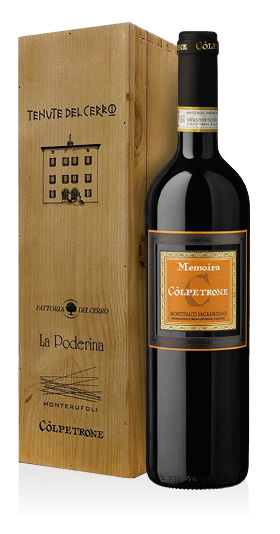Sagrantino
The Sagrantino grape is grown almost exclusively in Umbria, in particular in the territory of Montefalco where it was the origin of the DOCG since 1990. Its origins remain rather mysterious, and for centuries the local winemakers have used its grapes almost exclusively to produce wines raisins to be consumed during the most important religious holidays. Today it is vinified as a dry wine and is particularly appreciated in blend with Sangiovese. With the 2010 census there were about 950 hectares dedicated to Sagrantino. Its name derives from the Latin term sacer but its link with the city of Montefalco is of undoubted value. Here, in fact, according to a legend, the emperor Frederick II of Swabia, a great lover of falconry, would have spared the ancient city of Coccorone thanks to the return of the falcons who fled to the summit in front of the imperial camp. As a sign of gratitude, the emperor avoided its destruction by renaming it Montefalco. Beyond the name, the provenance of Sagrantino remains uncertain and debated, with testimonies that lead back to Pliny the Elder or the hypothesis of a transfer from Asia Minor by some monks. Nonetheless, it is a variety that has risked disappearing in the face of the advancement of the great international red grapes. It was the tenacity and passion of the Montefalco winemakers that ensured its survival over time. Only in the 70s and 80s Sagrantino began to be vinified in red to produce dry wines. Although it is not an easy grape to manage, the experience of Sagrantino is able to lead back to the dawn of unrivaled cultures and traditions. The high presence of tannins, in fact, requires long periods of aging in wood before delimiting the range and guaranteeing a harmonious, balanced and not very impetuous sip. Intense red in color, it opens on the nose with a bouquet of berries, blackberries, black currants and spices. The sip has great structure, with a warm and powerful body, supported by a dense tannic texture and good acidity. Perfect for consuming meat dishes, such as braised or game.
Why buy Sagrantino
Buying Sagrantino undoubtedly means re-establishing a relationship with local traditions that risked being forgotten before the 90s of the last century. Certainly a difficult wine to appreciate, it can reserve considerable surprises when tasted on the right occasions, even as a meditation wine. If you are looking for a full and powerful wine, territorial and daring, Sagrantino is the right choice to fall in love with at the first sip of all its complexity.
What are the characteristics of the Sagrantino grape?
The Sagrantino grape comes back to the fore in the 90s when the winemaking techniques allow to elaborate easier wines and to soften the harshness due to a consistent tannic structure. The grape traditionally grows in the municipalities of Montefalco and Bevagna, on soils and with different types of exposure, to give wines of great aromatic complexity in which the fruity component, composed of red and black fruits, plum and floral hints of violet, integrates with the perfection with tertiaries due to aging in wood such as tobacco and vanilla. With a minimum alcohol content of 13%, the yield of the vineyards must be a maximum of 80 quintals per hectare.
What are the most evident characteristics of Sagrantino wine?
Direct and immediate, Sagrantino wine always has recognizable characteristics that make it ample and powerful on the palate, with a strong tannic texture and capable of supporting complex and varied fruity scents.
What are the best food pairings for Sagrantino di Montefalco?
Among the best combinations for Sagrantino di Montefalco there are certainly grilled roasts and stews, aged cheeses and truffle risottos.

















